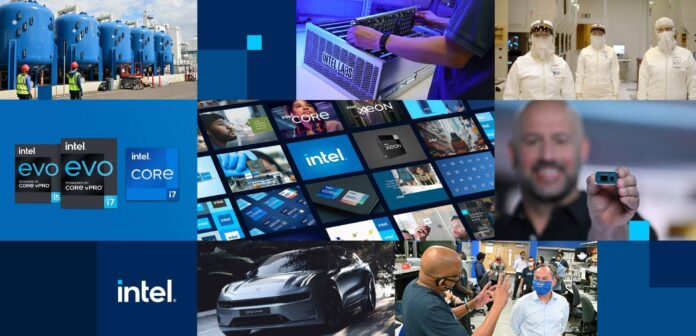Intel Plan for Europe: The first details are beginning to filter out about the development of the Intel 10-year plan for Europe, EUR 80 billion, aiming to increase Europe’s chip production capacity to reduce dependence on Taiwan, a leading semiconductor country. With the most significant investment planned for constructing two huge plants in Magdeburg, Germany, Intel’s plan also involves France, Ireland, Spain, Poland, and Italy to create the entire microchip supply chain on the continent: production, packaging, research, and development.
The news comes from Italy, where Intel and the Italian government have identified the site for the factory. It is Vigasio, a small town with just over 10,000 inhabitants in the province of Verona, preferred over the industrial district of Mirafiori in Turin. It was founded in 1939 as the home of Fiat and is currently owned by Stellantis. The choice for the small town in the Veneto region was oriented by its favourable location towards Germany: thanks to the Brenner motorway and railway, Vigasio is well connected to Magdeburg.
Italy takes the first steps of the EUR 80 billion
A plant will be built in Italy for the ‘packaging and assembly of semiconductors, in which new technologies will be used to weave together entire microchips from tiles.’ There are no firm dates when it will be operational, as there is still no indication when work will begin. According to Intel’s roadmap, however, the plant will be up and running within the two years 2025-2027 and will house around 1,500 employees in the initial phase. Employment will, however, be higher in the years to come, when with the arrival of suppliers and partners, employment is expected to exceed 5,000.
Although it has been decided where the plant will be built, no official announcements have been made so far because state subsidies are weighing heavily on the EUR 4.5 billion project wanted by Intel. The Italian government led by Mario Draghi, which closed the deal with the Californian company, has put up to 40% of the investment. Now that in Italy, the political polls have been won by Fratelli d’Italia, a right-wing party led by Giorgia Meloni, the approval of the new government, once it is formed and takes office, will be needed to proceed.
Precisely to make up for any change of plans, in order to revive Italy’s shares in the sector, the outgoing government has already sounded out other major semiconductor companies, such as Israel’s Tower Semiconductor (acquired by Intel in early 2022), the Italian-French STMicroelectronics and Taiwan Semiconductor Manufacturing Company, known as TSMC, to dominate the market with a share of over 50%.



